Allium ampeloprasum - Wild Leek
Phylum: Magnoliophyta - Class: Equisetopsida - Order: Asparagales - Family: Amaryllidaceae
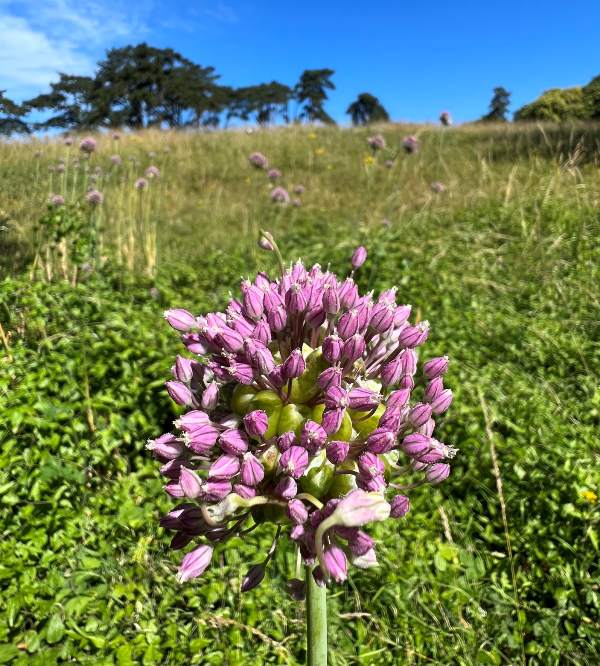
Although some authorities consider Wild Leek to be a species native to Britain, many other have concluded that Wild Leek was introduce to Britain and Ireland in prehistoric times.
Description
From bulbs up to 3cm in diameter, round stems, known as scapes, grow to typically 50cm but exceptionally to well over a metre in height. Each scape carries an umbel of typically 100 but occasionally up to 500 deeply-cupped flowers.
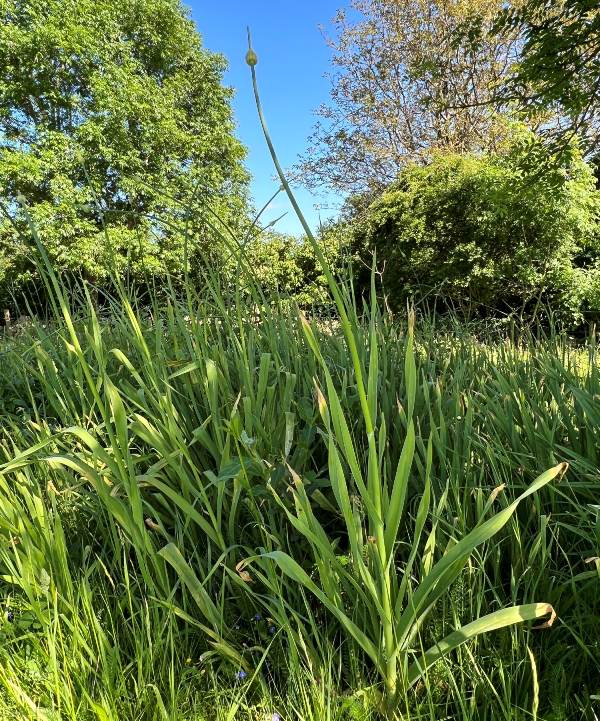
The individual flowers are up to 6mm in diameter with white, pink or reddish tepals, the colour becoming more intense as the flowers mature. The long green leaves of Wild Leek are quite similar to those of cultivated leeks, and when cut or bruised these plants smell strongly like onions.
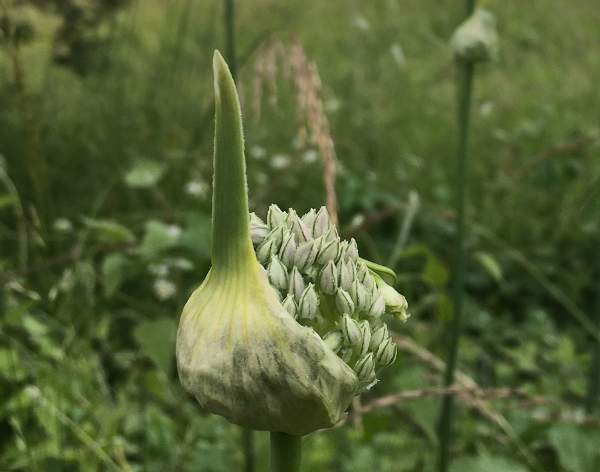
The anthers are often yellow but sometimes purple.
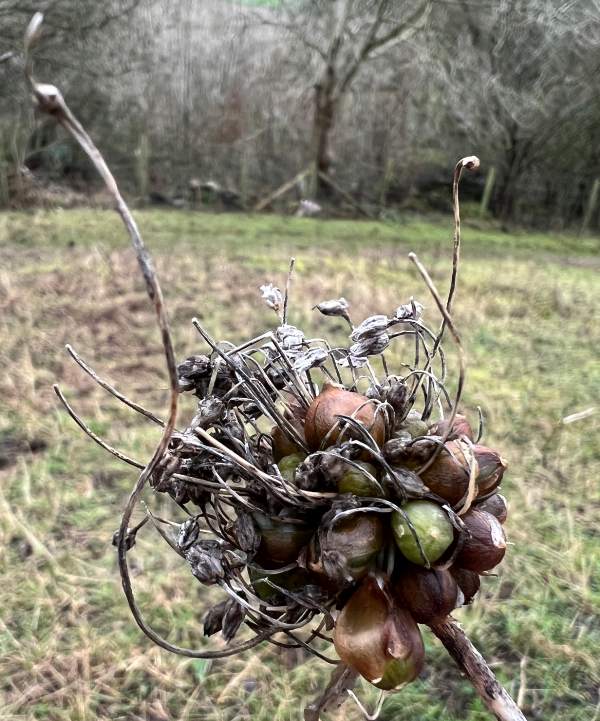
Seedhead of Wild Leek
Varieties
In mainland Britain two varieties are recorded, var. ampelopsasum and var. babingtonii, while var. bulbiferum is recorded in the Channel Islands.
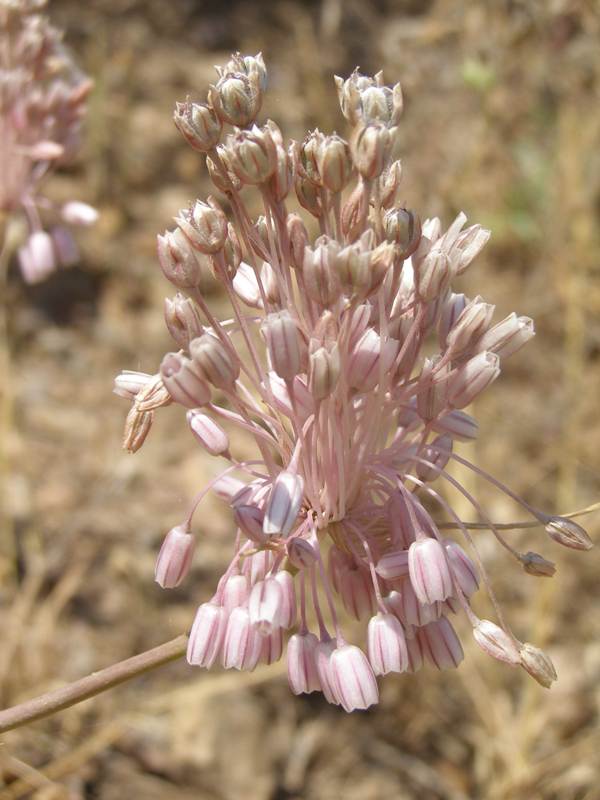
In the Mediterranean region, by the time Wild Leek is in full bloom, its leaves are very likely to have shrivelled and become unrecognisable. Fortunately, however, the flowers are quite distinctive. The specimen pictured above and the close-up below are from southern Portugal, where this variety, Allium ampeloprasum var, babingtonii is fairly common. It is distinguished by having loose globose umbels with numerous bulbils.
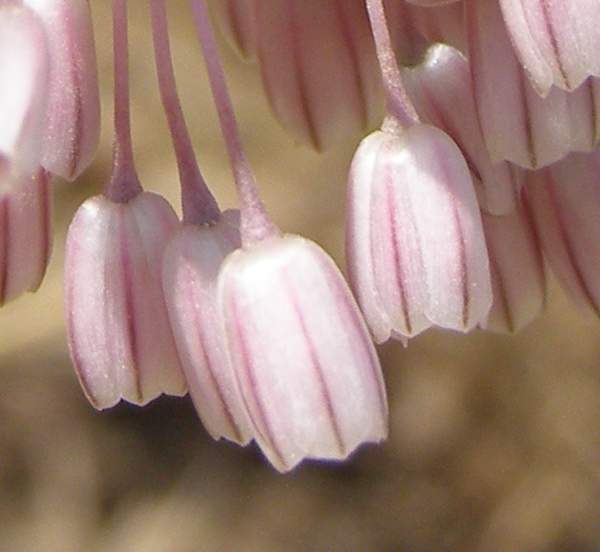
Distribution
In Britain and Ireland this lovely wildflower is rare and mainly restricted to the coastal areas of the south west of England and the West of Ireland. This relative of Wild Garlic is very common in the Iberian Peninsula and throughout the Mediterranean region.
Together with all other Allium species and several other related groups, this wildflower was until recently classified as a member of the Lily family (Liliaceae), but recent taxonomic revisions now place it in the family Amaryllidaceae.
Habitat
Wild Leek colonises sandy edges of fields and coastal cliffs and footpath edges, but these plants can also be found on fallow fields further inland.
Blooming Times
Depending on location Wild Leek blooms from May until July. At first the inflorescence appears in an almost perfect globe, but as the flowers age they droop forming the rather attractive waterfall effect seen in the picture above.
Uses
It is widely believed that cultivated leeks were derived from this species.
Etymology
Allium is the Latin word for garlic, while the specific epithet ampeloprasum comes from the Greek ampelos meaning vine, and prason meaning leek.
The specimens shown here was photographed in southern England in July and in the Algarve region of Portugal in May.
Acknowledgements
This page includes pictures kindly contributed by Simon Harding.
Sue Parker's latest ebook is a revised and enlarged second edition of the acclaimed Wildflowers in the Algarve - an introductory guide. Full details here...
Buy it for just £3.95 on Amazon...
Please Help Us: If you have found this information interesting and useful, please consider helping to keep First Nature online by making a small donation towards the web hosting and internet costs.
Any donations over and above the essential running costs will help support the conservation work of Plantlife, the Rivers Trust and charitable botanic gardens - as do author royalties and publisher proceeds from books by Pat and Sue.



